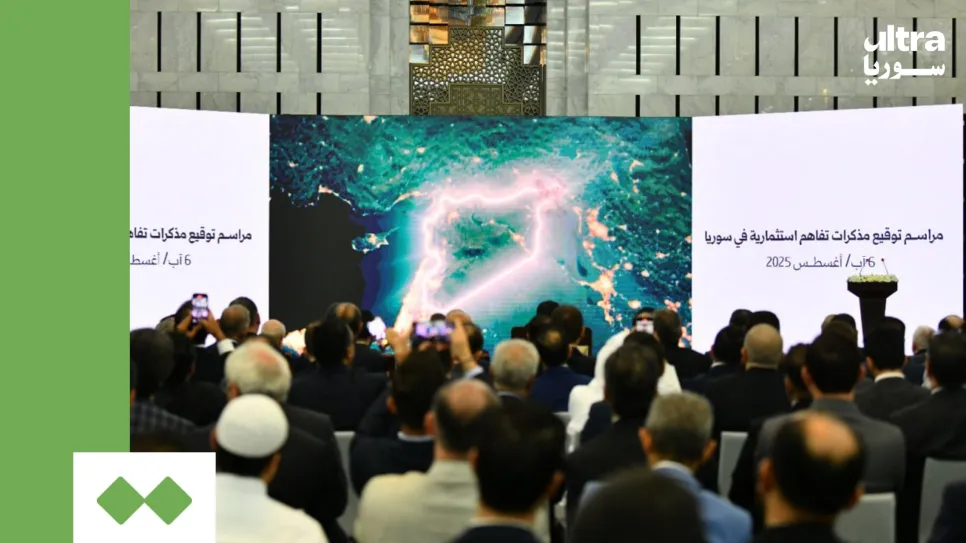The Syrian Investment Authority signed a series of major memoranda of understanding (MOUs) with international companies on Wednesday at the People’s Palace in Damascus, in a high-profile ceremony attended by President Ahmad al-Sharaa. According to the state-run SANA news agency, the agreements are expected to lead to the implementation of strategic projects worth a total of $14 billion.
Speaking at the signing ceremony, Talal al-Hilali, Chairman of the Syrian Investment Authority, described the event as “more than a formal occasion,” calling it “a clear declaration that Syria is open for investment, committed to building a prosperous future, and ready to partner with trusted allies to write a new chapter of recovery and growth.”
Hilali announced the signing of 12 projects, which he described as “major strategic initiatives” set to span across the country and “usher in a qualitative shift in Syria’s infrastructure and economic landscape.”
Among the most prominent projects included in the MOUs are:
- Damascus International Airport Redevelopment – $4 billion investment
- Damascus Metro Project – $2 billion investment in urban transit infrastructure
- High-rise Tower Complex in Damascus – $2 billion
- Baramkeh Towers – $500 million
- Baramkeh Mall – $60 million
“These are not just real estate or infrastructure ventures,” Hilali emphasized. “They are engines for job creation and bridges of trust between Syria and the global investment community.” He added that Syria is “opening the door to a future built on cooperation, legality, transparency, and the unbreakable determination of the Syrian people.”
Syrian Rights Group Warns of Critical Gaps in Decree Abolishing Preventive Seizures
Ayman Hamouyeh, Advisor to the Higher Council for Economic Development, echoed this message, stating that the signed MOUs prioritize projects that directly affect citizens’ daily lives. He noted active coordination with ministries and provincial governments to complete feasibility and investment studies.
Hamouyeh highlighted that residential development is a top priority, citing its capacity to generate employment across Syria, especially in light of the housing shortages caused by the Assad regime’s shelling of urban and rural areas. He added that the government is working to create a neutral and secure investment environment as it transitions toward a free-market economy, underpinned by recent legislative reforms.
Also present at the ceremony was U.S. Special Envoy to Syria, Thomas Barrack, who delivered remarks underscoring Syria’s enduring geostrategic importance. “Damascus remains a vital regional connector between major states like Qatar and Turkey,” Barrack said, adding that Syria’s geographic position “naturally situates it at the intersection of regional and international interests.”
This round of investment agreements follows the Syrian–Saudi Investment Forum held in Damascus in July, during which Syrian Minister of Information Hamza Al-Mustafa announced the signing of 44 agreements and MOUs valued at approximately $6 billion, expected to create 50,000 direct and 150,000 indirect jobs.
The developments mark a significant milestone in Syria’s post-conflict reconstruction efforts, as the new transitional government under President Sharaa seeks to attract foreign investment and rebuild the country’s devastated infrastructure.
This article was translated and edited by The Syrian Observer. The Syrian Observer has not verified the content of this story. Responsibility for the information and views set out in this article lies entirely with the author.


